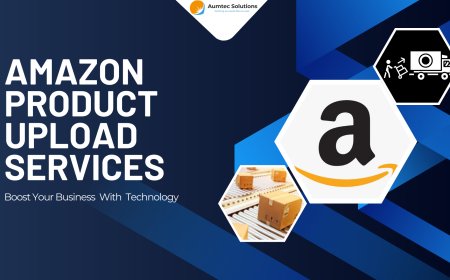Understanding the Compliance-Driven Process: A Guide for Businesses
Learn about the essential components of a compliance-driven process and how it enhances reputation, reduces risks, and improves operational efficiency. Discover implementation strategies for a robust compliance framework.
In today’s fast-paced business environment, compliance is more than just a regulatory requirement; it’s a crucial aspect of operational integrity and risk management. A compliance-driven process ensures that an organization adheres to laws, regulations, and internal policies, thereby safeguarding its reputation and minimizing legal and financial risks. This blog will explore what a compliance-driven process entails, its benefits, and how to implement it effectively within your organization.
What is a Compliance-Driven Process?
A compliance-driven process is a systematic approach designed to ensure that a business adheres to all relevant regulations, standards, and policies. It involves the integration of compliance measures into every aspect of business operations, from strategic planning and decision-making to day-to-day activities. The goal is to create a culture of accountability and transparency, where compliance is not merely a checkbox but a core component of the organization’s functioning.

Key Components of a Compliance-Driven Process
1. Regulatory Framework
Understanding the regulatory framework relevant to your industry is the foundation of a compliance-driven process. This includes local, national, and international regulations that impact your business. For example, financial institutions must comply with regulations like the Sarbanes-Oxley Act, while healthcare providers must adhere to HIPAA standards.
2. Policies and Procedures
Developing and implementing robust policies and procedures is essential for maintaining compliance. These should be clear, comprehensive, and regularly updated to reflect changes in laws and industry standards. Policies should cover areas such as data protection, financial reporting, employee conduct, and safety protocols.
3. Training and Education
Regular training and education for employees are crucial for ensuring that everyone in the organization understands and follows compliance requirements. This includes onboarding new employees, conducting refresher courses, and providing resources for staying updated on regulatory changes.
4. Monitoring and Auditing
Ongoing monitoring and auditing are necessary to ensure that compliance measures are being followed effectively. This involves regular reviews of processes, internal audits, and external assessments to identify and address any compliance gaps or issues.
5. Reporting and Documentation
Maintaining accurate and detailed records is vital for demonstrating compliance. This includes documenting compliance efforts, reporting any violations or breaches, and providing evidence of corrective actions taken. Proper documentation helps in audits and can serve as a defense in case of regulatory scrutiny.
6. Risk Management
A proactive approach to risk management is integral to a compliance-driven process. This involves identifying potential risks, assessing their impact, and implementing mitigation strategies. Risk management ensures that compliance issues are addressed before they escalate into significant problems.
Benefits of a Compliance-Driven Process
1. Enhanced Reputation
Adhering to compliance standards enhances your organization’s reputation with customers, partners, and stakeholders. It demonstrates a commitment to ethical practices and builds trust.
2. Reduced Legal and Financial Risks
By following regulations and industry standards, you minimize the risk of legal issues, fines, and financial penalties. A compliance-driven process helps in avoiding costly litigation and potential damage to your financial stability.
3. Improved Operational Efficiency
Implementing compliance measures often leads to streamlined processes and improved efficiency. Clear policies and procedures help in reducing operational ambiguities and ensuring consistent practices.
4. Increased Employee Accountability
A strong compliance culture promotes accountability among employees. When everyone understands their responsibilities and the importance of compliance, it fosters a sense of ownership and diligence.
5. Better Decision-Making
A compliance-driven process provides a structured approach to decision-making, ensuring that decisions are made within the framework of regulations and best practices. This reduces the likelihood of compliance-related issues arising from poor decision-making.
Implementing a Compliance-Driven Process
1. Assess Current Practices
Start by assessing your current compliance practices to identify areas for improvement. Conduct a gap analysis to understand where your organization stands in relation to regulatory requirements.
2. Develop a Compliance Strategy
Create a comprehensive compliance strategy that outlines your goals, objectives, and the steps needed to achieve them. This strategy should be aligned with your business goals and regulatory requirements.
3. Establish a Compliance Team
Form a dedicated compliance team responsible for overseeing and managing compliance efforts. This team should include individuals with expertise in relevant areas such as legal, financial, and operational compliance.
4. Implement and Monitor
Roll out your compliance strategy across the organization and ensure that all employees are aware of and follow the established policies and procedures. Continuously monitor compliance efforts and make adjustments as necessary.
5. Review and Improve
Regularly review your compliance processes to ensure they remain effective and up-to-date. Seek feedback from employees, conduct audits, and stay informed about changes in regulations to make necessary improvements.
Conclusion
A compliance-driven process is essential for businesses seeking to maintain integrity, avoid risks, and build a positive reputation. By understanding its components, benefits, and implementation steps, organizations can create a robust compliance framework that supports long-term success and operational excellence. Embracing a compliance-driven approach not only safeguards your business but also fosters a culture of responsibility and transparency.
What's Your Reaction?


























